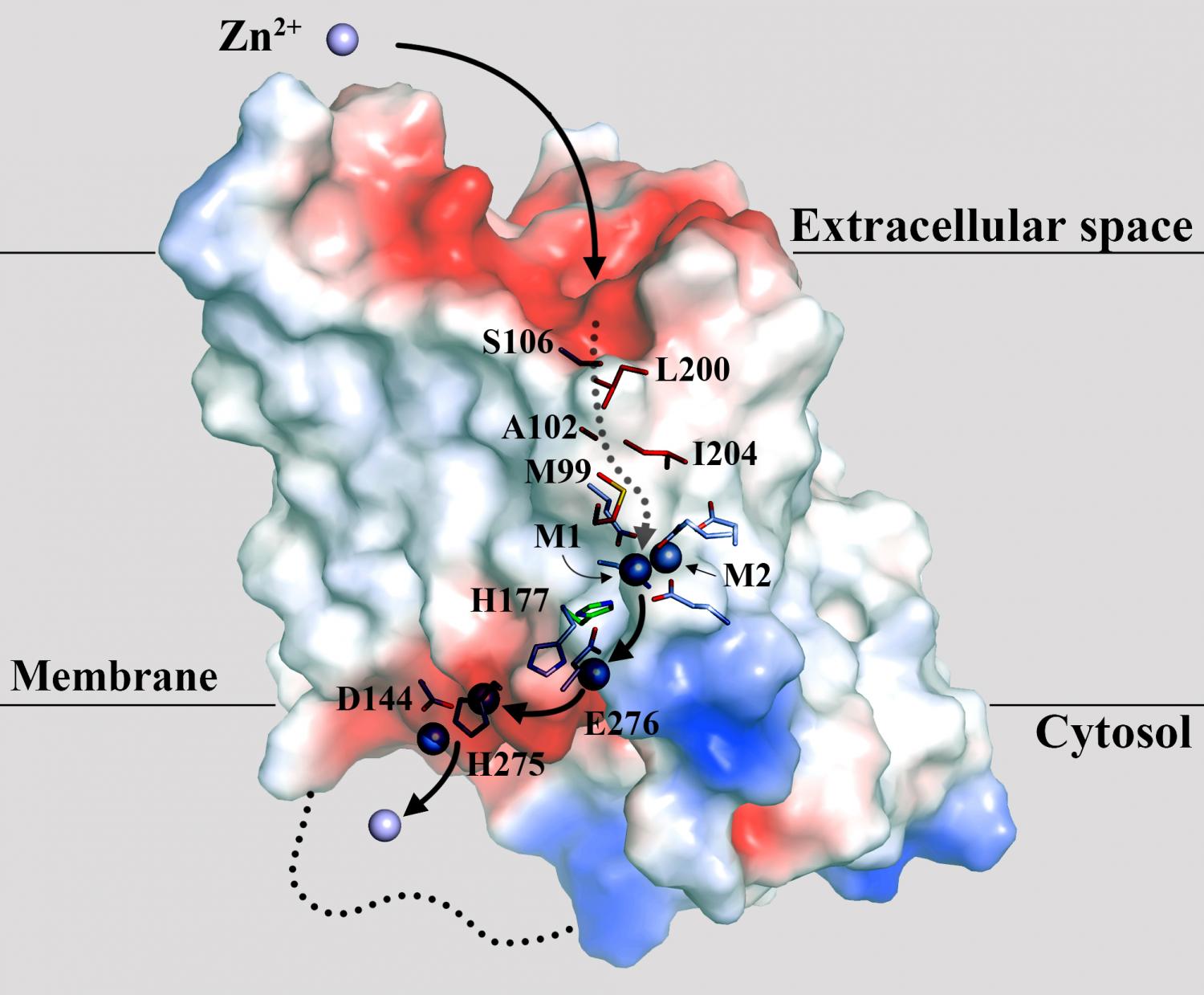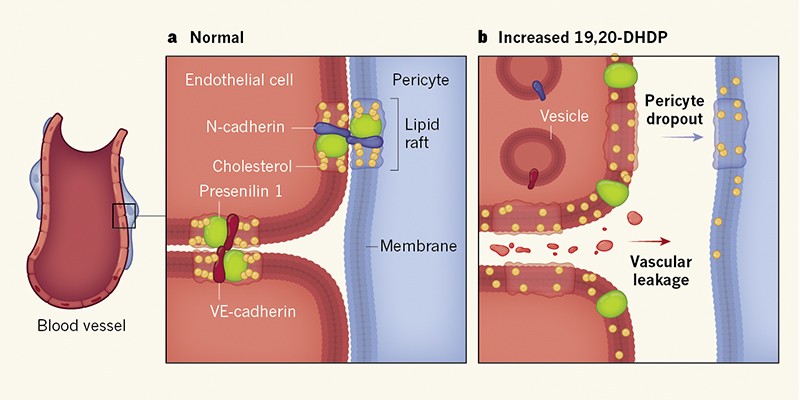LATEST MEDICAL NEWS

The immune cells that help tumors instead of destroying them
Lung cancer is the leading cause of cancer-associated deaths. One of the most promising ways to treat it is by immunotherapy, a strategy that turns the patient's immune system against the tumor. In the past twenty years, ...

Discovery deepens understanding of brain's sensory circuitry
Because they provide an exemplary physiological model of how the mammalian brain receives sensory information, neural structures called "mouse whisker barrels" have been the subject of study by neuroscientists around the ...

Drug blocks Zika, other mosquito-borne viruses in cell cultures
If there was a Mafia crime family of the virus world, it might be flaviviruses.
Cancer gene plays key role in cystic fibrosis lung infections
PTEN is best known as a tumor suppressor, a type of protein that protects cells from growing uncontrollably and becoming cancerous. But according to a new study from Columbia University Medical Center (CUMC), PTEN has a second, ...

Stuttering: Stop signals in the brain disturb speech flow
One per cent of adults and five per cent of children are unable to achieve what most of us take for granted—speaking fluently. Instead, they struggle with words, often repeating the beginning of a word, for example "G-g-g-g-g-ood ...

Intermittent fasting found to increase cognitive functions in mice
The Daily Mail spoke with the leader of a team of researchers with the National Institute on Aging in the U.S. and reports that they have found that putting mice on a diet consisting of eating nothing every ...

Study confirms link between the number of older brothers and increased odds of being homosexual
Groundbreaking research led by a team from Brock University has further confirmed that sexual orientation for men is likely determined in the womb.

3-D printed microfibers could provide structure for artificially grown body parts
Much as a frame provides structural support for a house and the chassis provides strength and shape for a car, a team of Penn State engineers believe they have a way to create the structural framework for growing living tissue ...

Association found between abnormal cerebral connectivity and variability in the PPARG gene in developing preterm infants
A team of researchers with King's College London and the National Institute for Health Research Biomedical Research Centre, both in the U.K., has found what they describe as a strong association between ...

Neuroscientists show deep brain waves occur more often during navigation and memory formation
UCLA neuroscientists are the first to show that rhythmic waves in the brain called theta oscillations happen more often when someone is navigating an unfamiliar environment, and that the more quickly a person moves, the more ...

Ultra-thin tissue samples could help to understand and treat heart disease
A new method for preparing ultra-thin slices of heart tissue in the lab could help scientists to study how cells behave inside a beating heart.

Time of day affects severity of autoimmune disease
Insights into how the body clock and time of day influence immune responses are revealed today in a study published in leading international journal Nature Communications. Understanding the effect of the interplay between ...

Researchers bring new insight into Chediak-Higashi syndrome, a devastating genetic disease
A team of researchers from the National Institutes of Health and University of Manchester have uncovered new insights into a rare genetic disease, with less than 500 cases of the disease on record, which devastates the lives ...

Potassium is critical to circadian rhythms in human red blood cells
An innovative new study from the University of Surrey and Cambridge's MRC Laboratory of Molecular Biology, published in the prestigious journal Nature Communications, has uncovered the secrets of the circadian rhythms in ...

Young diabetics could have seven times higher risk for sudden cardiac death
Young diabetics could have seven times more risk of dying from sudden cardiac arrest than their peers who don't have diabetes, according to new research.

Hormone discovery marks breakthough in understanding fertility
Scientists at The University of Nottingham have shown, for the first time, that a naturally occurring hormone plays a vital part in regulating a woman's fertility, a discovery that could lead to better diagnosis and treatment ...

State-level disclosure laws affect patients' eagerness to have their DNA tested
Different types of privacy laws in U.S. states produce markedly different effects on the willingness of patients to have genetic testing done, according to a new study co-authored by an MIT professor.

Babies born during famine have lower cognition in midlife
Hunger and malnutrition in infancy may lead to poor cognitive performance in midlife, according to a new study.

Tapeworm drug could lead the fight against Parkinson's disease
Researchers at Cardiff University, in collaboration with the University of Dundee, have identified a drug molecule within a medicine used to treat tapeworm infections which could lead to new treatments for patients with Parkinson's ...

Blood flow–sensing protein protects against atherosclerosis in mice
UCLA scientists have found that a protein known as NOTCH1 helps ward off inflammation in the walls of blood vessels, preventing atherosclerosis—the narrowing and hardening of arteries that can cause heart attacks and strokes. ...

How Zika virus induces congenital microcephaly
Epidemiological studies show that in utero fetal infection with the Zika virus (ZIKV) may lead to microcephaly, an irreversible congenital malformation of the brain characterized by an incomplete development of the cerebral ...

Drug suppresses spread of breast cancer caused by stem-like cells
Rare stem-like tumor cells play a critical role in the spread of breast cancer, but a vulnerability in the pathway that powers them offers a strategy to target these cells using existing drugs before metastatic disease occurs, ...

MRI scans predict patients' ability to fight the spread of cancer
A simple, non-invasive procedure that can indicate how long patients with cancer that has spread to the brain might survive and whether they are likely to respond to immunotherapy has been developed by researchers in Liverpool.

Researchers find common psychological traits in group of Italians aged 90 to 101
In remote Italian villages nestled between the Mediterranean Sea and mountains lives a group of several hundred citizens over the age of 90. Researchers at the University of Rome La Sapienza and University of California San ...

Major cause of dementia discovered
An international team of scientists have confirmed the discovery of a major cause of dementia, with important implications for possible treatment and diagnosis.

'Man flu' may be real
The much-debated phenomenon of "man flu" may have some basis in fact, suggests an article published in the Christmas issue of The BMJ.

Full moon linked to increased risk of fatal motorcycle crashes
The full moon is associated with an increased risk of fatal motorcycle crashes in the United States, the United Kingdom, Canada and Australia, finds a study in the Christmas issue of The BMJ.

Drug increases speed, safety of treatment for multiple food allergies
In a randomized, controlled phase-2 clinical trial, an asthma medication increased the speed and safety of a protocol used to treat children for several food allergies at once, according to a study by researchers at the Stanford ...

Social media trends can predict tipping points in vaccine scares
Analyzing trends on Twitter and Google can help predict vaccine scares that can lead to disease outbreaks, according to a study from the University of Waterloo.

Team identifies DNA element that may cause rare movement disorder
A team of Massachusetts General Hospital (MGH) researchers has identified a specific genetic change that may be the cause of a rare but severe neurological disorder called X-linked dystonia parkinsonism (XDP). Occurring only ...













 بنام خداوند طراح معماها
بنام خداوند طراح معماها